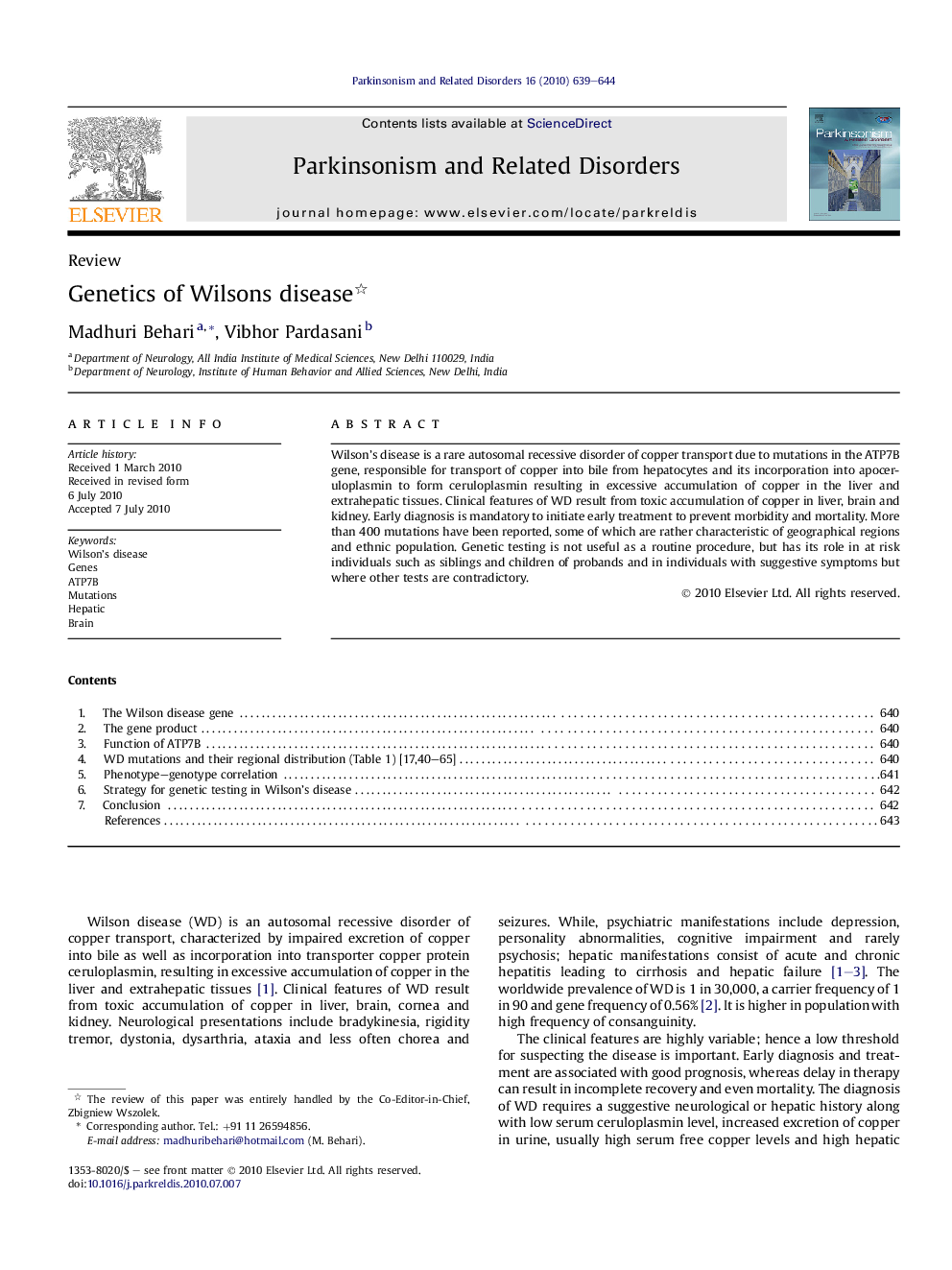| Article ID | Journal | Published Year | Pages | File Type |
|---|---|---|---|---|
| 1921049 | Parkinsonism & Related Disorders | 2010 | 6 Pages |
Wilson’s disease is a rare autosomal recessive disorder of copper transport due to mutations in the ATP7B gene, responsible for transport of copper into bile from hepatocytes and its incorporation into apoceruloplasmin to form ceruloplasmin resulting in excessive accumulation of copper in the liver and extrahepatic tissues. Clinical features of WD result from toxic accumulation of copper in liver, brain and kidney. Early diagnosis is mandatory to initiate early treatment to prevent morbidity and mortality. More than 400 mutations have been reported, some of which are rather characteristic of geographical regions and ethnic population. Genetic testing is not useful as a routine procedure, but has its role in at risk individuals such as siblings and children of probands and in individuals with suggestive symptoms but where other tests are contradictory.
